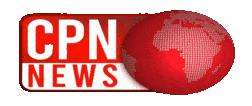Direct materials are one of the main components of prime costs and include raw materials and supplies that are consumed directly during the production of goods. Though the production of goods and services involves many different kinds of expenses, the prime cost formula only takes into account those variable expenses directly connected to the production of each item. During a month, Company B https://simple-accounting.org/ has a total cost of $55,000 in direct labor and $66,000 in factory overhead costs. A company’s accounts managers and production managers calculate these conversion costs to estimate the production expenses, and the value of the finished and unfinished inventory, and make product-pricing models. TThese direct labor costs are the same ones used in calculating the prime cost in manufacturing.
Please keep in mind that depreciation charges, insurance expenses, cost expenses, and electricity expenses are all considered manufacturing overhead. This report shows the costs used in the preparation of a product, including the cost per unit for materials and conversion costs, and the amount of work in process and finished goods inventory. A complete production cost report for the shaping department is illustrated in Figure 5.6. Now you can determine the cost of the units transferred out and the cost of the units still in process in the shaping department. Direct material is added in stages, such as the beginning, middle, or end of the process, while conversion costs are expensed evenly over the process.
- Direct labor costs include the salaries, wages, and benefits paid to employees who work on the finished products.
- It is rudimentary to gauge the value of closing inventory since it is a line item reported on both the income statement and the company’s balance sheet.
- Most firms incur three types of costs in the production of their products.
- Therefore, Company Z does not need to hold much inventory and still holds onto its money for a longer period.
Manufacturing overhead costs are things like indirect labor, utilities, supplies, equipment, insurance, taxes, tools, and regulatory obligations. Cost per conversion is a metric that can be used to evaluate the effectiveness of marketing and advertising campaigns as well as to gain valuable insights into manufacturing and production. Within the context of marketing and advertising, a conversion can be thought of as a desired user action that is being measured.
Conversion Costs in Accounting
Therefore, pricing just above the AVC might not be enough to turn an overall profit. By understanding this variable cost formula, companies can create more accurate forecasts for future costs. Financial teams can run “what-if” scenarios, like “how would our total costs be impacted by a 5% supplier price increase or a 20% increase in shipping costs? ” Accounting software or spreadsheets can be used to quickly calculate variable costs and see how such scenarios can affect gross profit margins.
Conversion cost gets its name because the costs that make up conversion cost are all the costs incurred to convert raw material into a finished good. A pen maker’s fixed costs, for example, would include the cost of the machinery to make the pens, administrative salaries, and factory rental costs – all of which remain steady regardless of production levels. In contrast, if the pen manufacturer scales up production, its variable costs – such as the amount spent on sub-contracted labor and raw materials like ink, plastic, and metal – would increase proportionally.
How To Calculate Cost Per Conversion: What You Need to Know
Retargeting and remarketing allow you to reach users who have already engaged with your brand, increasing the likelihood of conversion. By showing these users highly targeted ads that speak directly to their interests and needs, you can drive down your cost per conversion and grow your customer base more efficiently. This calculation can be done during any marketing campaign and helps gauge its effectiveness and determine how much your business has made or lost.
This means the bakery has a fixed weekly cost of $1,000 to get its 500 pounds of flour, and the cost remains the same whether the bakery makes no bread or 500 loaves. In such a case, there’s no flour-related semi-variable cost to account for. Someone might click on an ad but that might not lead to any conversion or action that you’ve defined as being successful or achieving the goal of the marketing how to depreciate assets using the straight campaign. Cost per click is a term that’s most often used to refer to the amount you’re charged for each click on your ad regardless of whether there is a conversion that follows or not. One of the most important metrics you can have as a company is the amount of money you’re paying to acquire something. This can be the cost to acquire the goods you’re selling or the cost to acquire a customer.
These include things like electricity costs, rent, depreciation, plant insurance, plant repairs and maintenance, and so on. The shaping department completed 7,500 units and transferred them to the testing and sorting department. No units were lost to spoilage, which consists of any units that are not fit for sale due to breakage or other imperfections. Since the maximum number of units that could possibly be completed is 8,700, the number of units in the shaping department’s ending inventory must be 1,200. The total of the 7,500 units completed and transferred out and the 1,200 units in ending inventory equal the 8,700 possible units in the shaping department. When a company’s CCC is negative, it means that it can use the money of its suppliers to generate cash flow, usually by being on credit with the suppliers.
Conversion Cost : Meaning, Formula, Types and Importance
Direct labor costs are the same as those used in prime cost calculations. Both these components are added together in order to arrive at the figure for conversion costs for the company for the particular year. By implementing these strategies, you can reduce your cost per conversion and increase the ROI on your marketing campaigns. You can also use this metric to compare the cost per conversion of different marketing channels by dividing the cost of each channel by the number of conversions generated by that channel. This will help you identify the most cost-effective channels for conversions.
The workers who get paid hourly to assemble a chair out of the wood and metal are considered direct labor. The cost of the indirect materials such as screws, stain, powder, and wire are indirect materials that are included as a manufacturing overhead cost. Additionally, the utilities, rent, and cost of the production floor manager are also classified as manufacturing overhead costs. The conversion cost definition is the direct labor and manufacturing overhead costs needed to convert raw materials into a finished product. The formula for calculating conversion costs is the sum of all direct labor and manufacturing overhead costs.
There’s no single formula for calculating variable costs, and a business can choose a formula tailored to its needs. Here are four variable cost formulas and what they can show business leaders and analysts. Second, it provides a way to compare the effectiveness of different marketing channels. By measuring each channel’s cost per conversion—the amount it costs a company in advertising and other expenses for every new customer it acquires through that channel—a company can determine its most effective ones. A cost unit is a product or service unit to which manufacturing costs can be assigned. For example, in the case of a phone manufacturer, the cost unit would be “per unit of phone.” It is critical to define cost units in order to accurately charge the costs incurred in all manufacturing processes.
In this manner, the suppliers are technically financing the company’s operations. In manufacturing, raw materials might include metals, plastics, hardware, fabric, and paint. For a furniture manufacturer, the raw materials might be lumber, hardware, paint, and varnish.
Any materials or labor whose direct association in the production process cannot be established must be excluded from the prime costs. For example, factory overhead and administrative costs are not part of prime costs. The cost of labor and payroll taxes used directly in the production process are part of prime costs.




